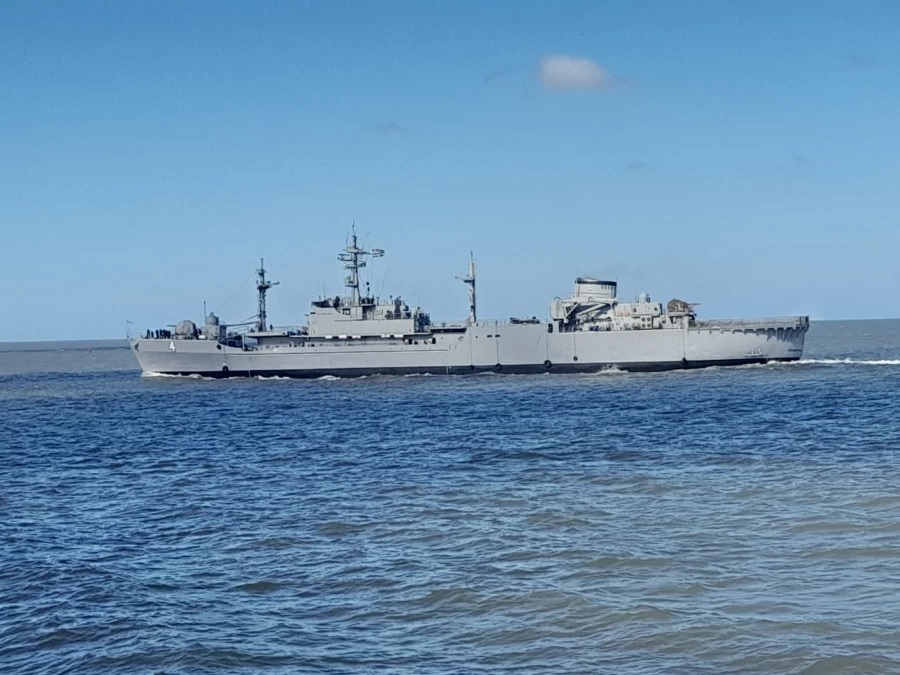After three years of work, the National Navy of Uruguay and the German shipyard Lurssen successfully concluded the re-motorization of the Luneburg class logistics vessel ROU 4 Artigas.
The works, which started in 2019 and were delayed by the pandemic and also by additional works to those scheduled initially, included the removal of the engines and associated propulsion systems, as they were obsolete, together with the propellers and hydraulic systems that were sent to Germany for a complete overhaul and overhaul.
Likewise, the shafts and their support bearings were disassembled for overhaul, at which time it was detected that, in addition to the work on the propulsion plant, corrective tasks should be carried out on the shafts to allow the ship to sail with 100% effectiveness in its propulsion plant.

Given this, the German company Propulsion Engeeniering was subcontracted to correct the defects found. The work was successfully carried out with personnel from the Navy’s Construction and Repair Service (SCRA).
Once the new CAT 3516C engines were installed, the ship’s systems were integrated, including a state-of-the-art integrated digital steering and control system with cutting-edge technology.
This modernization will help shorten the technological gap to prepare the Navy for the future reception of modern ships, including the new OPVs expected to be acquired in the short term.
SMOOTH SEA TRIALS
As a final test of the engine installation process, between November 7 and 9, the long-awaited sea trials were carried out, which were successful.
These consisted of docking and undocking the vessel using different angles of pitch and rotation, calculation of the vessel’s evolution curve maneuvering at a large rudder angle to evaluate the behavior of the propulsion plant and the steering system, forward gear with maximum power, quickly bringing the entire gear to full reverse to simulate an emergency to stop the vessel immediately, one of the hardest and most demanding tests for any propulsion equipment, which was completed successfully in just a few minutes.
In addition, high-speed navigation tests were carried out at sustained high speed for two hours, reaching speeds never achieved by the vessel -since it was received in 2005- and different simulated tests of emergencies to verify the responses of the alarm systems of the vessel’s platform control software.
All the tests, even the most rigorous, were successfully completed without inconvenience.
BOW THRUSTER
Asked about alleged damage to its auxiliary propellers, the Navy explained that the ship’s bow thruster, a small additional propeller that was installed on the bow while still serving in Germany to improve its maneuverability in port and in maneuvers that require high precision, was not in service since 2018 and is not vital to the operation of the ship.
Furthermore, given its high relative replacement cost (including the fact that the original manufacturer no longer exists), it was not included in the current re-motorization process because the necessary funds for its replacement were unavailable.
While it is projected in the future, depending on financial availability, the Navy has no plans to repair it at this time.
The ship additionally received a total overhaul of its structure and electronic systems, including incorporating two new radars donated by Germany and other additional systems.
The ship is expected to participate in the November 15 naval parade, along with the recently received Marine Protector class coast guard cutters.
With information from InfoDefensa

